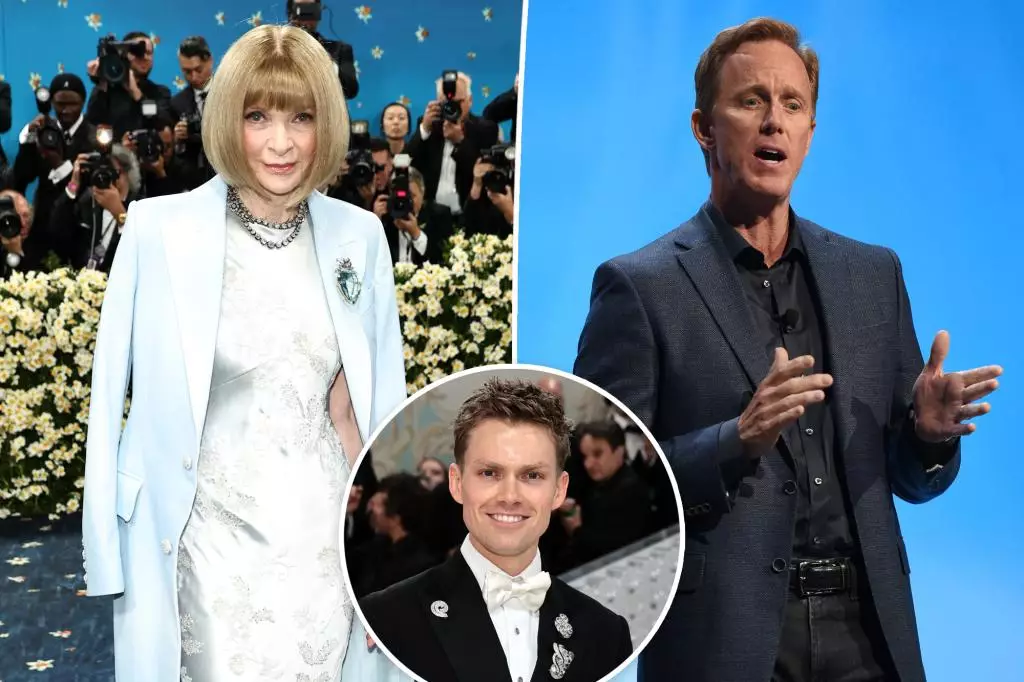In the evolving landscape of magazine journalism, editorial transitions often act as bellwethers for organizational dynamics. Recent developments at Condé Nast, particularly concerning Anna Wintour and her selection of Mark Guiducci as Vanity Fair’s first global editorial director, provide a riveting case study. Wintour’s decision, purportedly made in isolation and against the inclinations of Condé Nast CEO Roger Lynch, raises questions about the influence of personal connections versus professional merit. Outwardly, the reaction among staffers suggests a pervasive unease, hinting at deeper rifts within the corporate culture of this once unassailable publishing giant.
Wintour’s Alleged Autonomy: A Double-edged Sword
The narrative surrounding Wintour’s decision posits her as a figure operating outside the realm of corporate oversight. Allegations that she “steamrolled” Lynch track back to a more profound issue: the balance of power in creative leadership. Was this appointment genuinely in the best interest of Vanity Fair, or does it signify an era where personal relationships overshadow professional judgment? Observers report that the atmosphere following the announcement felt like a collective mourning, with many employees perceiving Guiducci as a “nepo” hire—a reflection of the nepotism culture rampant in high-fashion editorial circles.
On the flip side, some argue that Wintour’s historical vision for Vogue—and by extension, the broader Condé Nast portfolio—has been critically influential. Critics assert that while Guiducci may have benefited from his connections, Wintour’s knack for identifying creative talent cannot be dismissed. Her endorsement carries weight; after all, she describes him as “an energetic and creative editor at the center of his generation.” Yet, the underlying tension suggests that such declarations may be glossing over a rich tapestry of dissent.
Industry Reactions: Cautiously Optimistic or Sceptical?
Responses from the broader industry reflect a mixed bag of opinions. While some seasoned insiders recognized Guiducci’s track record at Garage magazine as a foundation for potential success, the shockwaves of his association with Wintour can’t be overlooked. This duality creates a bittersweet anticipation—could his appointment inspire fresh innovation at Vanity Fair, or will it relegate the magazine to an echo chamber of Wintour’s established aesthetic? The perception among Hollywood insiders leans toward skepticism, raising pertinent questions about whether this move represents genuine strategic foresight or a mere consolidation of power.
Adding to the complexity of the situation is the timing of Guiducci’s appointment, succeeding Radhika Jones after a seven-year tenure. Jones’ departure had been filled with emotional farewells, which juxtaposes sharply against the current staff sentiment suggesting uncertainty and dissatisfaction. The contrast between these two events frames Wintour’s selection as less of a forward-thinking progression and more of a regressive step toward hierarchical control.
The Future of Vanity Fair: Potential Pitfalls and Promises
As Guiducci assumes his role, the future trajectory of Vanity Fair could hinge significantly on his ability to mend the fissures exposed by his arrival. While the company formally projects confidence in this new leadership—highlighted by Lynch’s public affirmation of Guiducci—internal morale is slowly revealing a more complicated picture. Staffers’ concerns about creative suffocation and the specter of elitism could stifle innovation unless directly addressed.
Moreover, Guiducci must now navigate the landscape of expectations set by both Wintour and a skeptical editorial team. Can he establish an identity that resonates with the magazine’s longstanding fanbase while appeasing Wintour’s expectations? This balancing act forms the crux of his impending challenge. In this hyper-connected digital age, where reader loyalty often hinges on authenticity, the stakes for Guiducci’s leadership could not be higher.
In this moment of editorial evolution, one cannot overlook the intricate webs of power, friendship, and artistic integrity. Wintour’s motivations, Guiducci’s capabilities, and the sentiments of the Vanity Fair team come together to shape not only the future of this iconic magazine but also a broader dialogue about the role of personal ties in professional advancement within the creative industries. As the dust settles on this controversial appointment, the publishing world watches closely, eager to see what comes next in this unfolding saga.


Leave a Reply